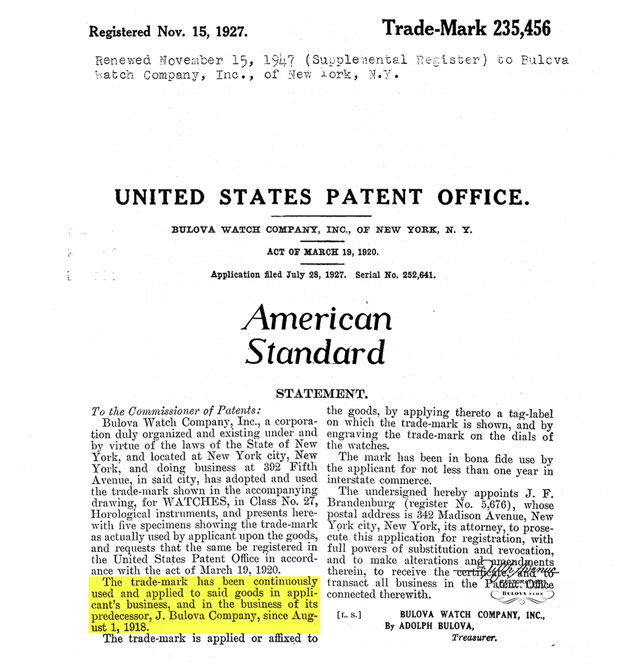2 piece Case measures 27.5mm lug to lug x 19mm non inclusive of the Crown using Calipers.
Unsigned Dial shows Black printed Arabic numerals.
Hour and Minute Hands are Fusaux style.
Movement bridge is Hand signed Bulova, plate is stamped Tissot.
Hinged Caseback is stamped as shown.
Date of manufacture is speculative.
http://www.mybulova.com/node/4960?page=1
enjoy.




In reply to Extra zero in case SN in main by bobbee
I have seen these Roman numerals on watches other than Bulova, I believe we are correct in assuming that it is to match a case to a movt. This may have been done both in the factory at time of assembly, or in the case of pocket watches, (non Bulova) after the case is chosen for the movt by the customer.
Using the Roman numeral etching was common in the the early watches as stated. You would be surprised to see, now that you can go back and look, at how many of our watches have this. I certainly was. And have been happy and disappointed in some of the findings...(Don't feel so bad Will :-))Interesting that the option of it possibly having been etched outside of the factory at the jeweler came up. I have only heard of that practice being done in factory. Is there any support for your thoughts on that very interesting observation? JP or Stephen can you ask your Bulova connections about that process? I will certainly ask mine. More to come....
The idea I had about the stamping is not viable, maybe it was done at the factory, and denotes the model? If we take into account the second number as the date, the first number must have some meaning.
When the first number started being used as the date number, does this coincide with the dropping of the first numeral being used as some other meaning, and the last numbers turning past the '99,999' point?
Could it be that simple, the case serial numbers reaching 100,000 and keeping the total at seven numerals, maybe to avoid re-tooling?
In reply to The idea I had about the by bobbee
It probably is something that simple, but I also bet there's a little more info in those first two numbers of earlier models which we are not aware of to date. d
I thought "Percision" too, and maybe the name dissapeared with time? Was the name less resistant to time than the numerals on these watches?
Like I just posted on another thread, Bulova made early dials from Sterling silver and baked on the numbers and lettering.
"BULOVA DIALS Are made of Sterling platinum finish The numerals are baked hard enamel The dials can be cleaned and polished and numerals will not wash off Bulova (dials) will always retain their finish."
Unless the earliest dials such as these underwent a different treatment, I think these are quite hardy and resistant to cleaning off, unless someone really wanted the name off for some reason?
So many early Bulova dials had no name printed on them at all, so I think this one is as originally made, even though it has had some vigourous "going over"!
Check the case serial numbers out on this.
http://www.mybulova.com/watches/1921-lady-maxim-6546
One digit apart, yet are of totally different case designs, also this has the earlier 'globe' stamp, and the other the later 'shield' logo.
I think the last three numbers are the ones we should be concentrating on, as these two records show these have nothing to do with a sequential system.
Possibly the first number may be hand stamped, maybe it designates which machine was used, or which operator made it.
